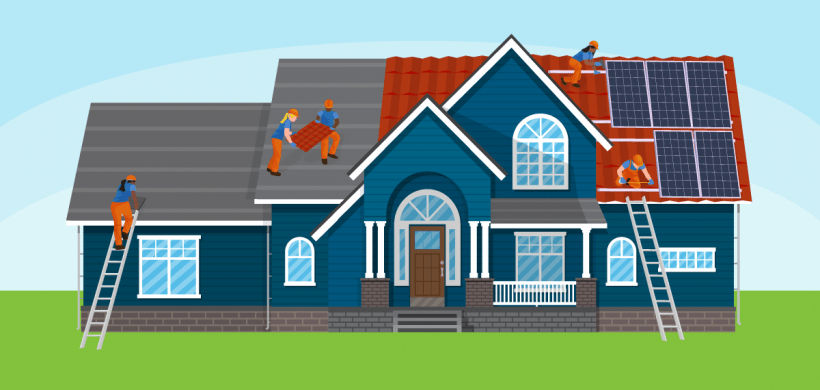While some distributed solar systems can be ground-mounted or placed atop car ports, the vast majority of residential systems are placed atop a homeowner’s roof. As such, it’s helpful to know what changes, if any, need to be made to a roof before installation, and for replacement and upkeep down the road.
- Pre-Installation Roof Repairs & Responsibility Before the installer goes about putting in an initial solar system, they should be able to let you know whether roof repairs are needed initially (roof replacement is usually recommended beforehand). Further, you should discuss with the installer whose job it is to repair damages to the roof or leaks.
- Verify the Necessity of Repairs There are a number of factors that homeowners can note to decide whether their roof needs repairs in the first place: Rainfall, snow, wind, general wear and tear from inclement weather, and the age of the rooftop (rule of thumb recommends replacement after 20-30 years) just to name a few. ADT Solar recommends having a specialist come out to decide whether repairs are necessary, and they’ll look for “quality and color of insulation; discolored roof decking; damaged shingles, vents, or other areas; [and] leaking and other possible water damage in the interior”.
- Vent Pipe Placement Most roofs have plumbing vent pipes along them. Installers may simply work around them, but if you want to maximize your placement of panels, a roofer can be asked to either relocate vent pipes, or install low-profile vents which sit below panels.
- 6-Step Process ADT Solar recommends following a sex-step process which involves 1. Notifying the system installer; 2. Have the system installer remove the solar panels; 3. Place the removed solar panels in an enclosed and protected area; 4. Have a roofer remove the damaged roof; 5. Have a roofer install a new roof; 6. Have the system installer reinstall the solar panels.
- Identify Cost-Savings The DOE and NREL estimate that while in theory, the combined cost of roof replacement and solar installation should be $30,000, but that when performed together, the actual average cost was $25,000. The $5,000 in savings are possibly the result of partnerships between roofers and installers, essentially slashing the customer acquisition costs. Ask your roofer/installer about partnerships they have, which could result in savings of up to 30% on roofing.
Additional resources:
● U.S. Department of Energy – Decisions, Decisions: Choosing the Right Solar Installer
● ADT Solar – How to Replace a Roof with Solar Panels: a Comprehensive Guide
● Energy Sage – Roofing with Solar Panels: Overview and Options
● U.S. Department of Energy – Replacing Your Roof? It’s a Great Time to Add Solar

